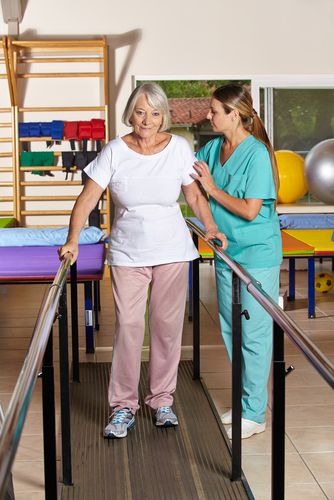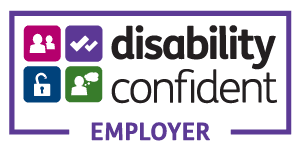Allied Health Professionals (AHPs) form the backbone of America’s healthcare system, delivering diagnostic, therapeutic, and technical support that complements the work of physicians and nurses. From radiologic technologists and physical therapist assistants to speech-language pathologists and dietitians, AHPs play an essential role in improving patient outcomes and healthcare efficiency.
As the healthcare industry evolves, the demand for skilled and specialized allied health workers continues to grow across hospitals, outpatient centers, and research facilities. Yet, many professionals and aspiring AHPs wonder how they can progress in their careers, expand their expertise, and move into leadership or non-clinical roles.
This blog provides a comprehensive insight into career progression opportunities available for Allied Health Professionals in the United States. Whether you are an aspiring entrant or an experienced practitioner, you will learn the stages of advancement, the importance of Continuing Professional Development (CPD), a step-by-step roadmap to career growth, and practical tips for sustaining professional success.
Understanding the AHP Stages and Career Progression Pathways in the US
Career progression for Allied Health Professionals in the US typically follows a structured pathway from entry-level roles that require minimal education to advanced and leadership positions that demand higher qualifications, certifications, and management experience. Additionally, many AHPs transition into non-clinical careers that utilize their expertise in administrative, research, or educational settings.
Below is a breakdown of the major stages and available roles within each category.
Entry-Level Roles: Building Clinical Foundations
Entry-level allied health roles provide the foundation for developing essential patient care and technical skills. The educational requirements vary; some positions accept a high school diploma or equivalent, while others require postsecondary training or an associate degree from an accredited program.
For many entry-level roles, certification or licensure may be required to practice legally or preferred by employers. For instance, Radiologic Technicians, Physical Therapist Assistants, and Pharmacy Technicians must be certified or licensed in most states before they can work independently.
In contrast, roles such as Medical Assistants and Phlebotomists may not require certification to begin employment, but obtaining one can significantly enhance job prospects, salary potential, and career mobility.
At this stage, professionals gain hands-on experience, learn to work within multidisciplinary teams, and build the clinical and interpersonal foundation needed to progress into specialized or supervisory roles.
Mid-Level Roles: Advancing Through Specialization
Mid-level allied health roles mark a significant step forward in professional growth. At this stage, practitioners often move beyond routine clinical duties to take on specialized responsibilities, supervise junior staff, or lead focused patient care programs.
Progressing to mid-level positions typically requires additional education, specialized certifications, or several years of clinical experience. Many professionals choose to pursue bachelor’s degrees or advanced certifications.
Common examples of mid-level roles include
- Occupational Therapists
- Speech-Language Pathologists
- Respiratory Therapists
- Clinical Laboratory Scientists.
These positions demand critical thinking, advanced clinical judgment, and an ability to manage complex patient cases or specialized diagnostic equipment.
Mid-level professionals often begin to explore mentorship, education, or research pathways, laying the groundwork for eventual transition into senior or leadership roles.
Advanced Roles and Leadership Opportunities
Advanced-level allied health roles represent the peak of clinical expertise and professional influence. At this stage, practitioners often lead departments, manage multidisciplinary teams, or contribute to policy development, education, and research.
Progression to advanced roles typically requires a master’s or doctoral degree, extensive clinical experience, and leadership or administrative training. Professionals in these positions combine clinical excellence with strategic decision-making to shape healthcare delivery and mentor upcoming practitioners.
Examples of advanced roles include
- Clinical Managers
- Program Directors
- Healthcare Administrators
- Clinical Educator
- Advanced Practice Therapist
Some professionals also branch into non-clinical pathways such as health informatics, quality assurance, or public health management.
At this level, allied health professionals play a critical role in shaping care standards, advancing innovation, and ensuring the sustainability of healthcare systems across the United States.
Non-Clinical Roles: Transitioning Beyond Patient Care
For those seeking to diversify, allied health careers extend into non-clinical roles that utilize clinical knowledge in administrative, educational, or research capacities.
Examples of non-clinical pathways
- Medical and Health Services Manager
- Clinical Research Associate
- Quality Improvement Specialist
- Medical Sales Representative
- Healthcare Policy Analyst
These roles appeal to AHPs interested in broader healthcare system impact without direct patient care duties.

Continuing Professional Development (CPD): A Key Driver of Career Progression
Continuing Professional Development (CPD) is vital for Allied Health Professionals aiming to maintain competency, adapt to evolving technologies, and achieve lasting career growth. It goes beyond formal education, encompassing structured learning activities that enhance professional skills and expertise.
Common CPD options include attending workshops or conferences, completing online certifications, engaging in mentorship programs, contributing to clinical research, and pursuing postgraduate studies.
Notable CPD platforms and organizations include American Allied Health (AAH), American Society of Radiologic Technologists (ASRT), and National Athletic Trainers’ Association (NATA).
Active participation in CPD not only enhances professional credibility but also ensures that Allied Health Professionals remain aligned with industry best practices, regulatory standards, and employer expectations.
Step-by-Step Guideline: From Entry-Level to Advanced Roles
The following step-by-step guide outlines how professionals can progress through each career phase strategically.
Step 1: Obtain the Required Education
Start by identifying your desired allied health field and complete the minimum qualification, whether it’s a certificate, associate's, or bachelor’s degree. Consider accredited programs recognized by the Commission on Accreditation of Allied Health Education Programs (CAAHEP) or other allied health professional bodies.
Step 2: Gain Clinical Experience
Hands-on experience is essential. Entry-level positions provide practical exposure to healthcare environments, allowing you to develop patient communication, time management, and procedural skills.
Step 3: Earn Certification and Licensure
Certification validates professional competence. Obtain nationally recognized credentials specific to your field, such as ARRT, CRT, RRT, and many more, to increase employability and expand job opportunities across states.
Step 4: Pursue Specialization
After gaining experience, consider specializing in a niche area such as cardiopulmonary care, pediatric rehabilitation, or medical imaging. Advanced certifications or degrees will strengthen your expertise and salary potential.
Step 5: Advance into Leadership or Non-Clinical Roles
Professionals seeking broader influence can pursue leadership or administrative positions through graduate education, such as a Master’s in Health Administration (MHA) or a Doctorate in clinical practice. Others may transition into academia, management, or research to diversify their career path.
Step 6: Engage in CPD and Networking
Sustain growth by joining professional organizations and attending industry events. Networking through platforms like the American Medical Technologists (AMT), AOTA, and ASHA enables professionals to connect with mentors, explore job opportunities, and share best practices.

Tips for Making Career Growth Sustainable
Maintaining career momentum in allied health requires deliberate effort and strategic planning.
- Set Career Milestones: Identify short-term and long-term professional objectives and review them annually.
- Seek Mentorship: Connect with senior colleagues or association-led mentorship programs for guidance and inspiration.
- Stay Technologically Updated: Keep up with innovations such as telehealth, AI diagnostics, and electronic health records.
- Balance Work and Learning: Avoid burnout by setting manageable career goals and maintaining work-life balance.
- Engage in Networking and Collaboration: Attend conferences, webinars, and association meetings to build professional relationships.
- Partner with a Recruitment Agency: A trusted healthcare recruitment agency can match you with roles that align with your career stage and growth goals, offering insight into job market trends nationwide.
Conclusion
Career progression for Allied Health Professionals in the United States is an exciting journey shaped by education, certification, and ongoing professional development. From entry-level to leadership and non-clinical positions, there are limitless opportunities for growth across the allied health spectrum.
By embracing CPD, earning certifications, and actively networking, professionals can stay competitive and advance into roles that reflect both their expertise and aspirations.
Whether you are just starting or looking to advance, the key to success lies in continuous learning, adaptability, and commitment to excellence in healthcare service delivery.
Advance Your Allied Health Career with Us
At Verovian AHPs Recruitment Agency, we connect Allied Health Professionals with fulfilling roles across the United States. Whether you’re starting or ready to advance, our recruitment team helps you find opportunities that match your skills and career goals.
Contact us today to discover your next Allied Health position and take the next step in your professional journey.





